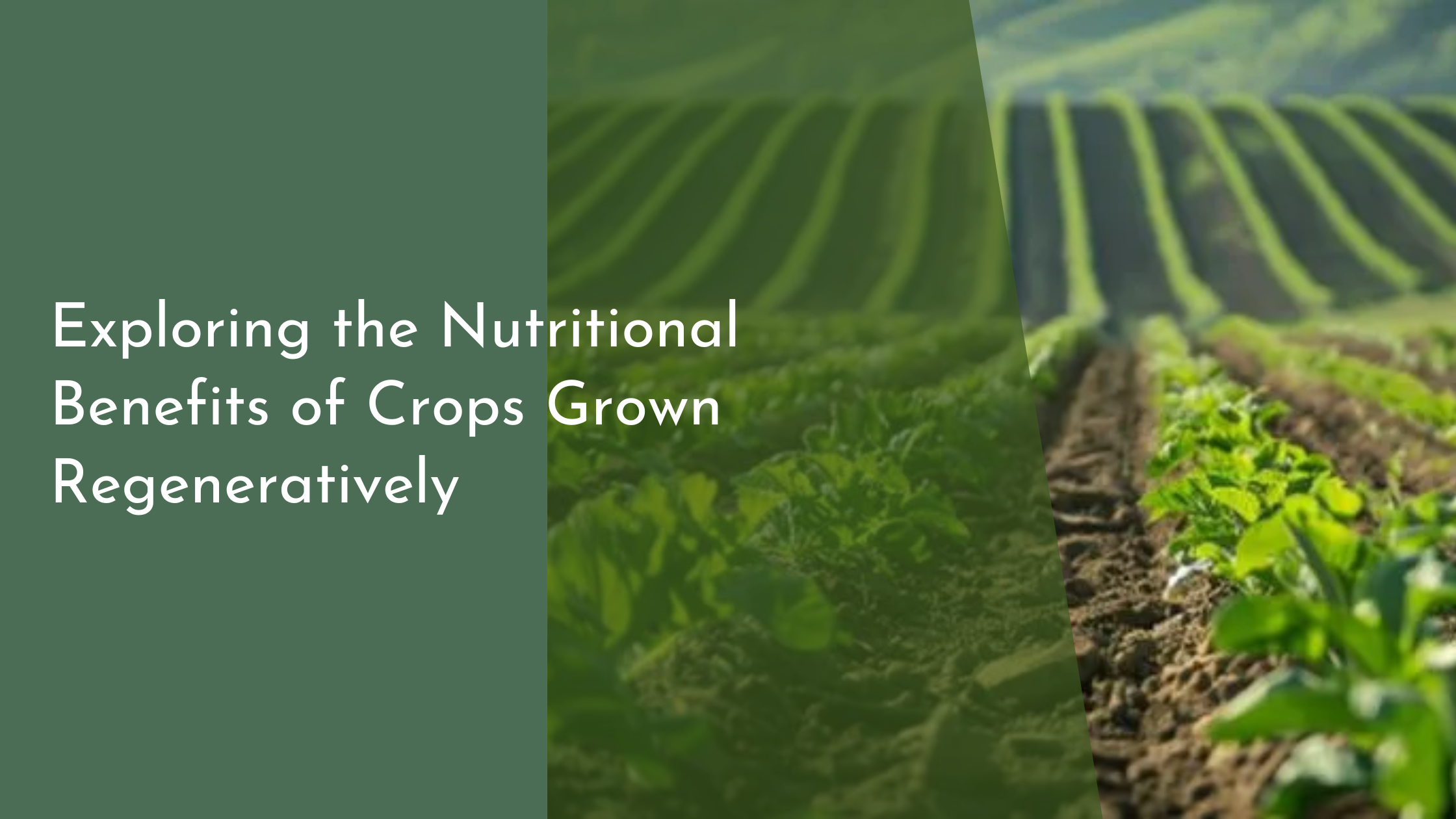Exploring the Nutritional Benefits of Crops Grown Regeneratively
In recent years, there has been a growing movement towards sustainable and environmentally friendly farming practices known as regenerative agriculture. As more consumers become aware of the impact of traditional farming on the environment, there is a burgeoning interest in understanding how these methods can also enhance the nutritional value of the food we eat. In this article, we delve into the fundamentals of regenerative agriculture, explore the nutritional benefits of crops grown through these methods, and compare them to conventional farming practices. We’ll also discuss how embracing regenerative foods can lead to a healthier future for both people and the planet.
Understanding Regenerative Agriculture Basics
Regenerative agriculture is a holistic farming approach that focuses on restoring and enhancing the health of the ecosystem. This method encompasses a variety of practices such as crop rotation, cover cropping, reduced tillage, and the integration of livestock. Unlike conventional agriculture, which often depletes soil nutrients and relies heavily on chemical inputs, regenerative agriculture aims to build soil health, increase biodiversity, and improve the water cycle. By prioritizing these ecological processes, farmers can produce crops that are not only more sustainable but also more resilient to climate change and pest pressures.
The core principles of regenerative agriculture revolve around soil regeneration, increasing organic matter, and improving water retention. These principles lead to healthier soils that are rich in nutrients and microorganisms, which are essential for plant growth. As a result, crops grown in such an environment benefit from improved access to essential nutrients, leading to enhanced nutritional profiles. Regenerative practices also strive to create a balanced ecosystem that supports natural pest control and reduces the need for chemical fertilizers and pesticides, further enriching the quality of the crops produced.
Key Nutritional Benefits of Regeneratively Grown Crops
One of the standout nutritional benefits of crops grown regeneratively is their higher micronutrient content. Healthy soils, teeming with life, provide plants with a rich source of vitamins and minerals that are crucial for human health. Studies have shown that regeneratively grown produce often contains higher levels of vitamins such as vitamin C, vitamin E, and beta-carotene. Moreover, these crops are also more likely to have increased levels of essential minerals like magnesium, calcium, and potassium, which are vital for maintaining optimal bodily functions.
Another significant advantage is the higher concentration of phytochemicals found in regeneratively grown crops. Phytochemicals are natural compounds that have been linked to a range of health benefits, including anti-inflammatory and antioxidant properties. They play a crucial role in reducing the risk of chronic diseases such as heart disease, diabetes, and certain types of cancer. The stressors experienced by plants in regenerative systems, such as increased competition and natural pest pressures, can lead to greater phytochemical production, further enhancing the nutritional value of the food.
Comparing Nutrient Density in Farming Methods
When comparing nutrient density between regenerative and conventional farming methods, the differences can be quite striking. Conventional agriculture often prioritizes yield over quality, which can lead to nutrient depletion in both the soil and the produce. The reliance on chemical fertilizers and pesticides can further strip the soil of its natural fertility, resulting in crops that may be lower in essential nutrients. In contrast, regenerative practices focus on building soil health, which directly impacts the nutrient density of the crops.
Regenerative farming’s emphasis on organic matter and soil biodiversity leads to more nutrient-rich produce. The enhanced soil conditions allow plants to absorb and retain more nutrients, resulting in higher nutrient density per serving. This means that individuals consuming regeneratively grown foods may obtain more vitamins, minerals, and beneficial compounds in each bite compared to those consuming conventionally grown counterparts. Such nutrient-rich foods can contribute to better overall health, making regenerative agriculture an appealing option for health-conscious consumers.
Embrace a Healthier Future with Regenerative Foods
As awareness of the benefits of regenerative agriculture grows, more consumers are seeking out products that align with this sustainable approach. By choosing regeneratively grown foods, individuals can support farming practices that promote ecological balance and biodiversity, all while nourishing their bodies with nutrient-dense produce. This shift in consumer demand encourages more farmers to adopt regenerative practices, creating a positive feedback loop that benefits both the environment and public health.
Embracing regenerative foods represents a step towards a healthier future for both people and the planet. As more research highlights the link between soil health and human health, it becomes increasingly clear that regenerative agriculture holds the potential to address some of the most pressing challenges facing modern food systems. By supporting regenerative practices, we can contribute to a more sustainable and nutritious food supply, ensuring a vibrant and healthy future for generations to come.
Regenerative agriculture offers a promising path forward in our quest for sustainable and nutritious food systems. With its focus on ecological health and nutrient-rich produce, this approach not only benefits the environment but also enhances our well-being. As we continue to explore and support regenerative farming practices, we pave the way for a future where the food we consume is healthier, and the planet thrives. Let us embrace this journey towards regenerative foods and look forward to a more balanced and nourishing world.

